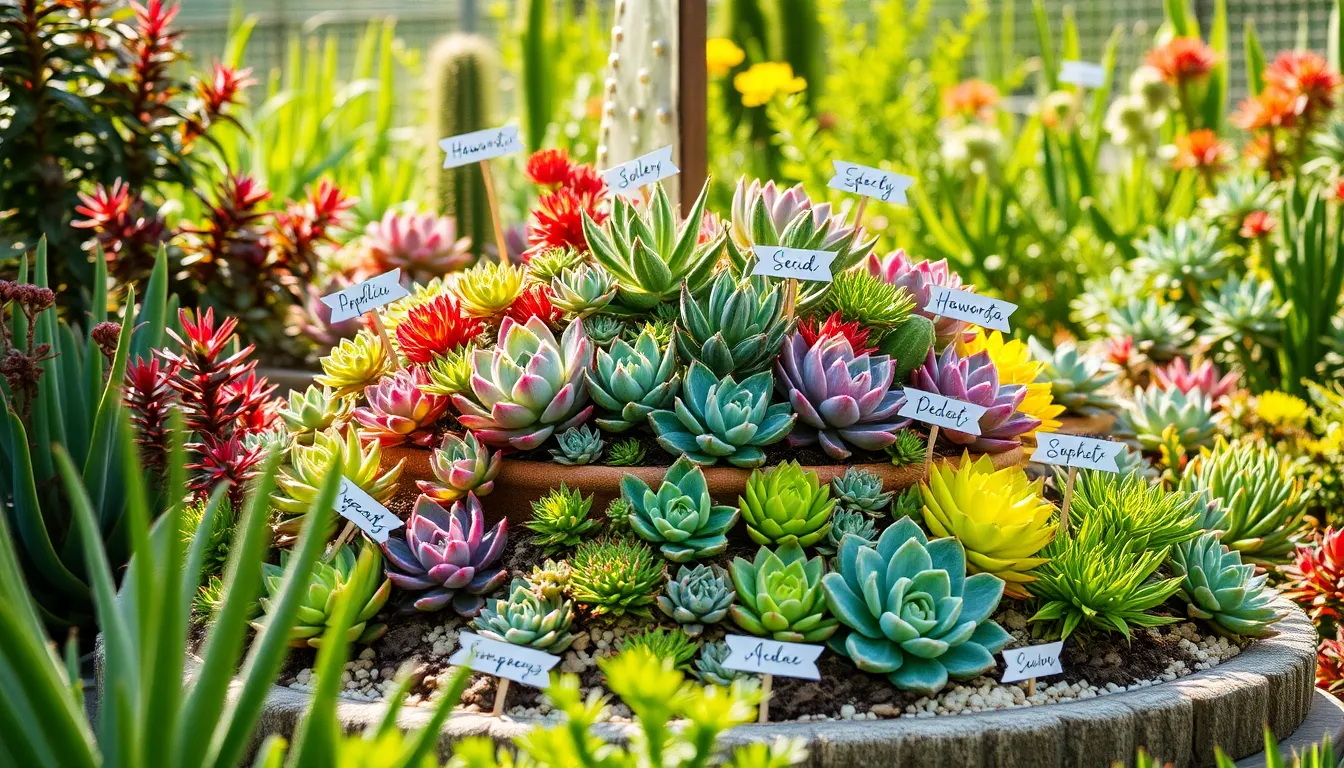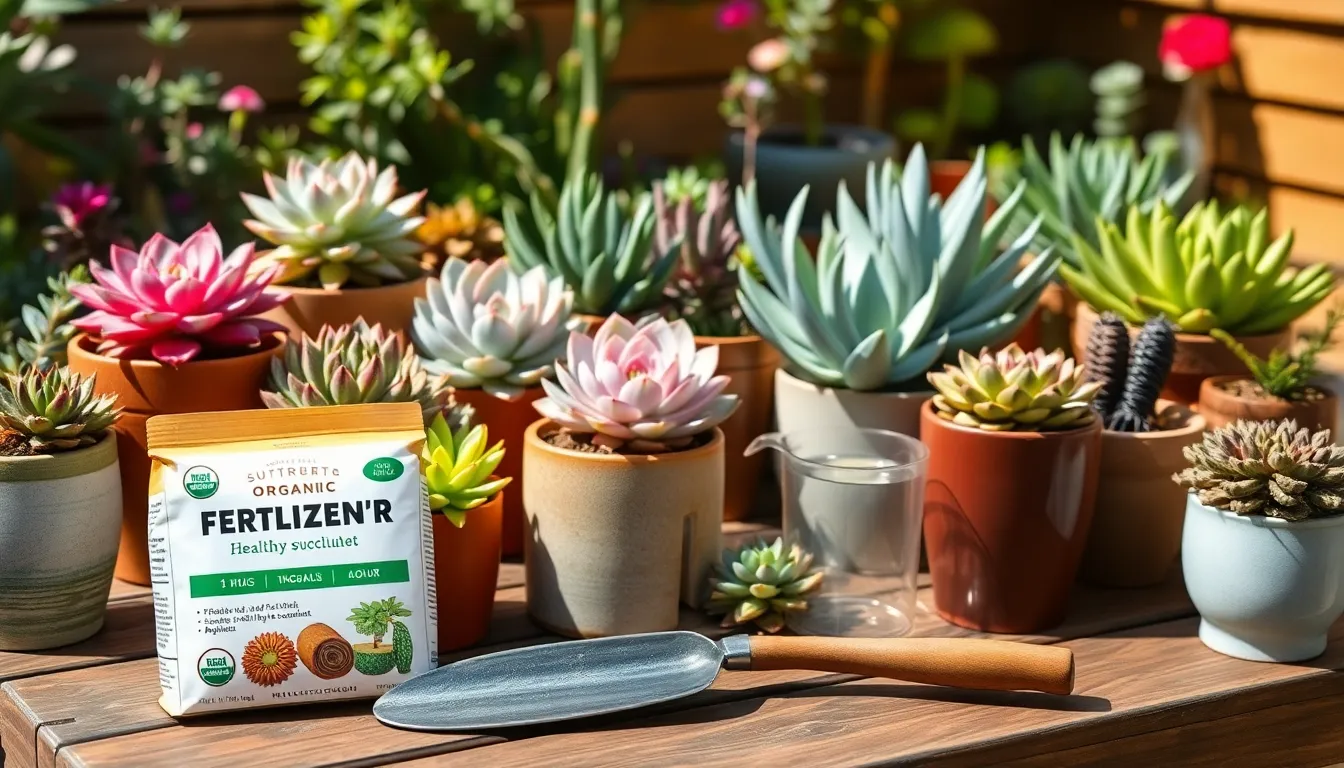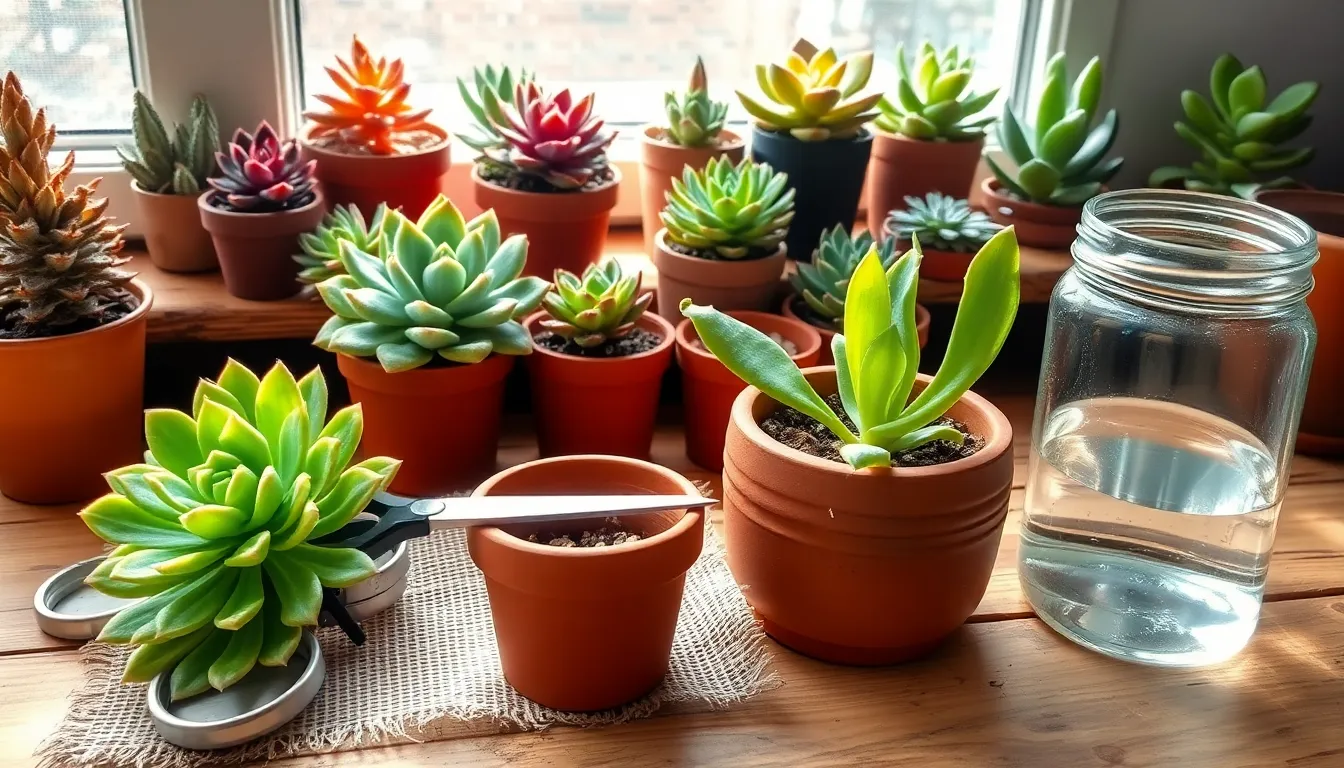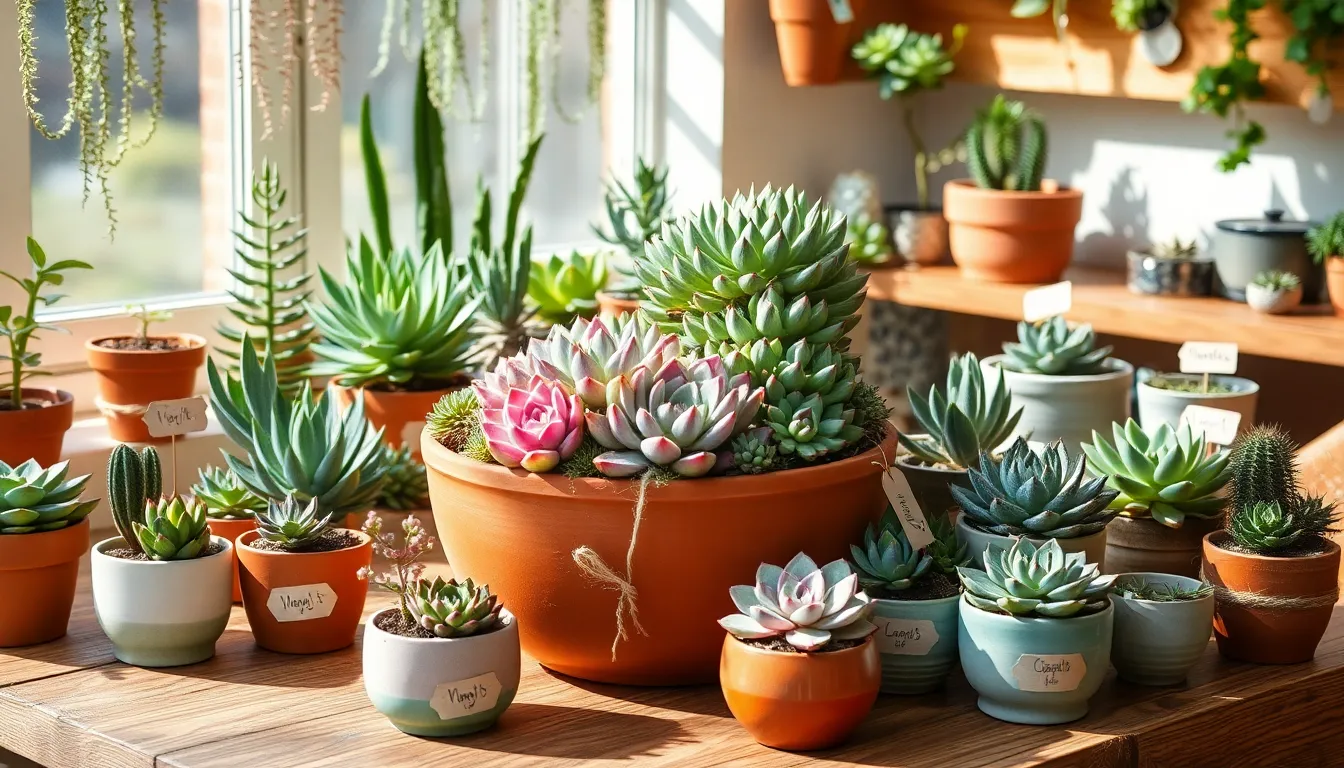Welcome to “20 Expert Tips for Thriving Succulents,” where the magic of gardening meets the resilience of these delightful plants. Whether you’re a beginner just dipping your toes into the world of succulents or a seasoned gardener looking to refine your green thumb, this guide is your key to unlocking the secrets of succulent success.
In this collection of expert tips, you’ll discover how to transform your living spaces into lush, thriving displays of nature’s artistry. These tips are designed to equip you with practical techniques that ensure your succulents not only survive but flourish, bringing joy and satisfaction to your gardening journey.
By delving into this guide, you’ll gain confidence and the skills needed to overcome common challenges faced by succulent enthusiasts. Embrace the rewarding experience of watching your succulents thrive, as you nurture these wonderful plants with ease and expertise.
Choose the Right Pot Size
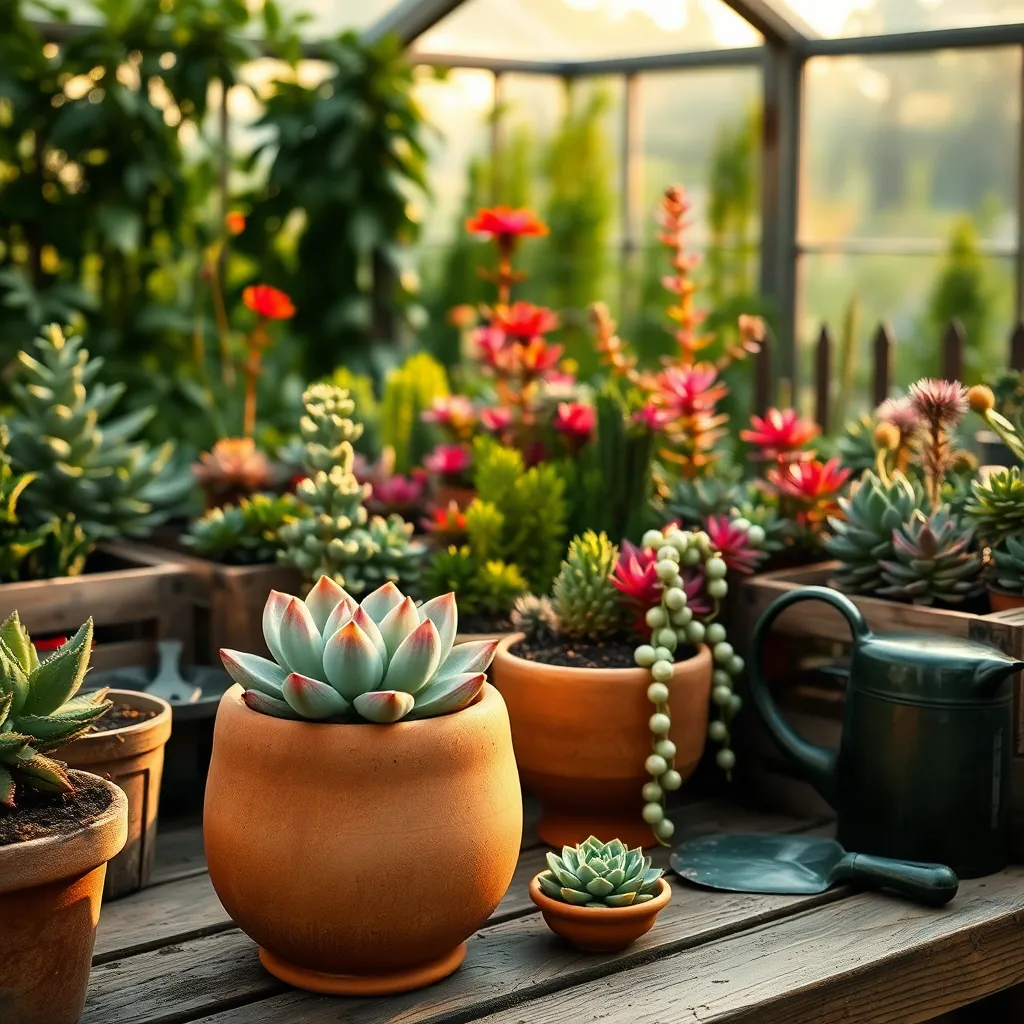
Choosing the right pot size is crucial for the health and growth of your succulents. Ensure that the pot is large enough to accommodate the plant’s root system, allowing for some extra room for growth.
For beginners, it’s important to know that succulents prefer a pot with a drainage hole to prevent root rot. Excess water must be able to escape, so avoid pots without proper drainage.
Experienced gardeners might experiment with different pot materials for optimal plant health. Terracotta pots are excellent as they allow the soil to dry out faster, which is ideal for succulents.
When repotting, select a pot that is only slightly larger than the current one. This prevents excessive soil that can hold too much moisture, potentially harming your plant.
Ensure Adequate Air Circulation
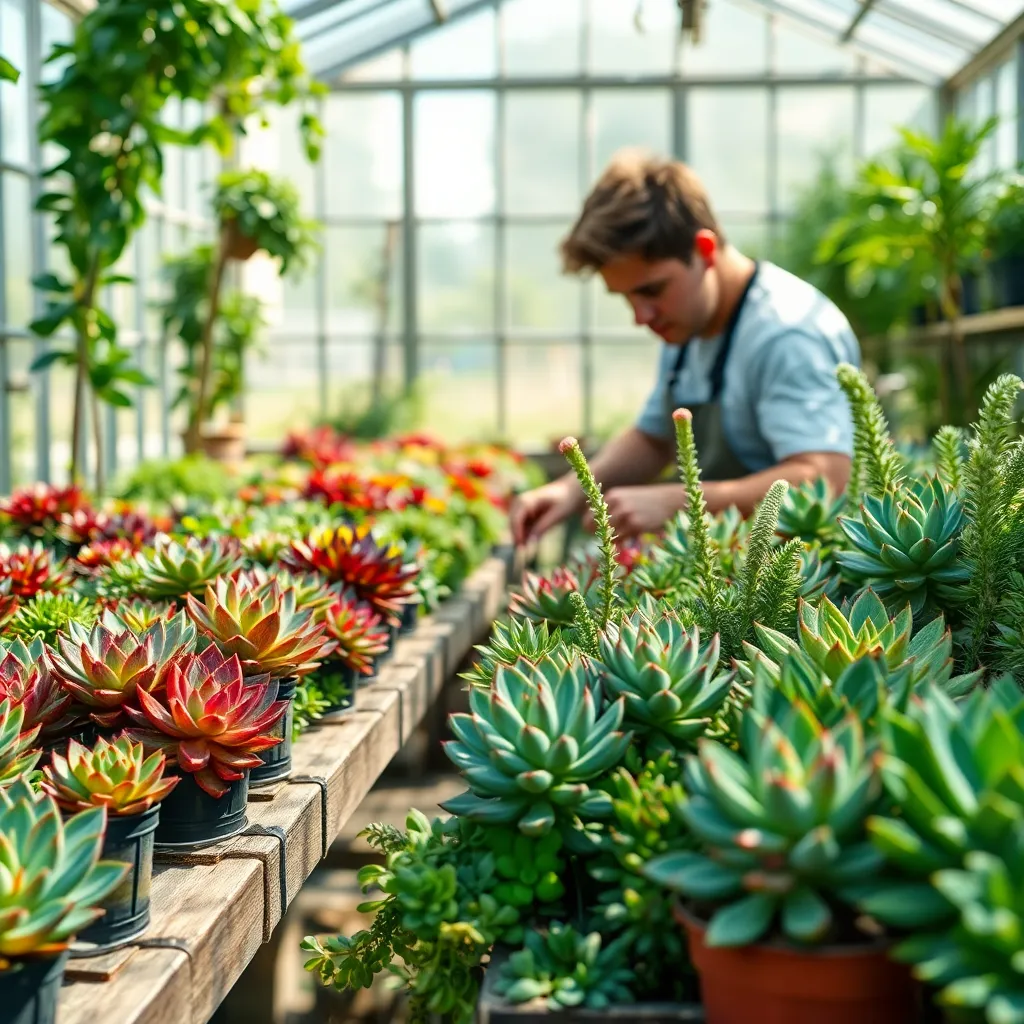
Proper air circulation is crucial for the health of your succulents as it helps prevent mold and pests. Place your succulents in areas where they can enjoy a gentle breeze, such as near a window or an open space in your garden.
Ensure that your succulents are not overcrowded, as this can hinder air flow and promote moisture buildup. When planting, maintain a distance of at least a few inches between each plant to allow for adequate air movement.
Consider using a fan in indoor spaces to enhance air circulation, especially if your succulents are in a room with limited ventilation. A small desk fan set on low can help simulate natural breezes, which succulents thrive on.
For those with experience, try elevating your succulents using plant stands or shelves to increase air flow around the pot. This technique not only improves air circulation but also adds an aesthetic dimension to your plant display.
Rotate Plants for Even Growth
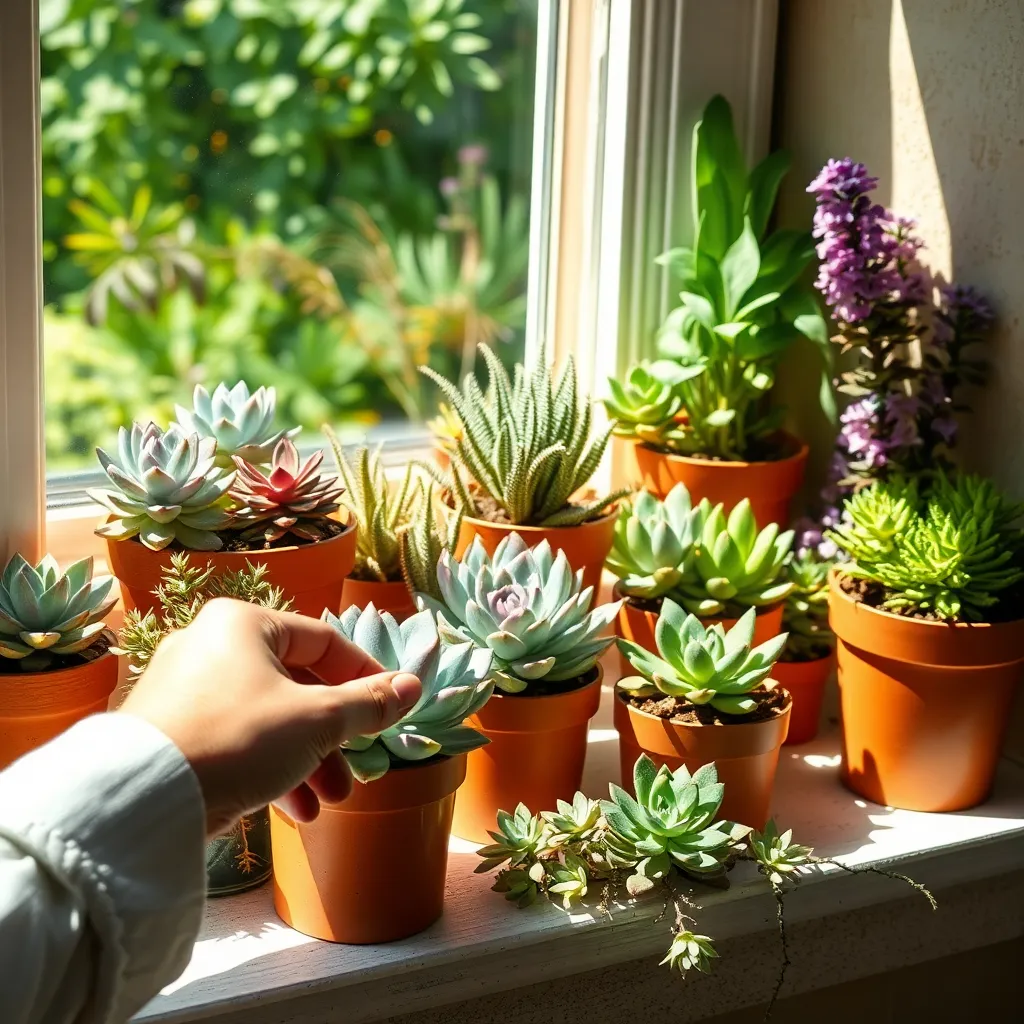
To ensure your succulents receive equal exposure to light, regularly rotating them is essential. This simple practice helps prevent the plants from leaning towards the light source, promoting balanced growth and a more aesthetically pleasing appearance.
Begin by turning your succulents a quarter turn every week. This frequency is ideal for most home environments where light might be coming from a single direction, ensuring each side of the plant benefits equally from sunlight.
For those with succulents placed in windowsills or under grow lights, consider marking the pot to track your rotation schedule. Consistent rotation not only promotes even growth but also prevents any one side from becoming disproportionately shaded and weak.
If you have mature succulents or larger arrangements, rotating them can also help in identifying any developing issues, such as pests or diseases, on different parts of the plant. This proactive care makes it easier to address problems early and keep your succulents thriving.
Fertilize Sparingly in Spring
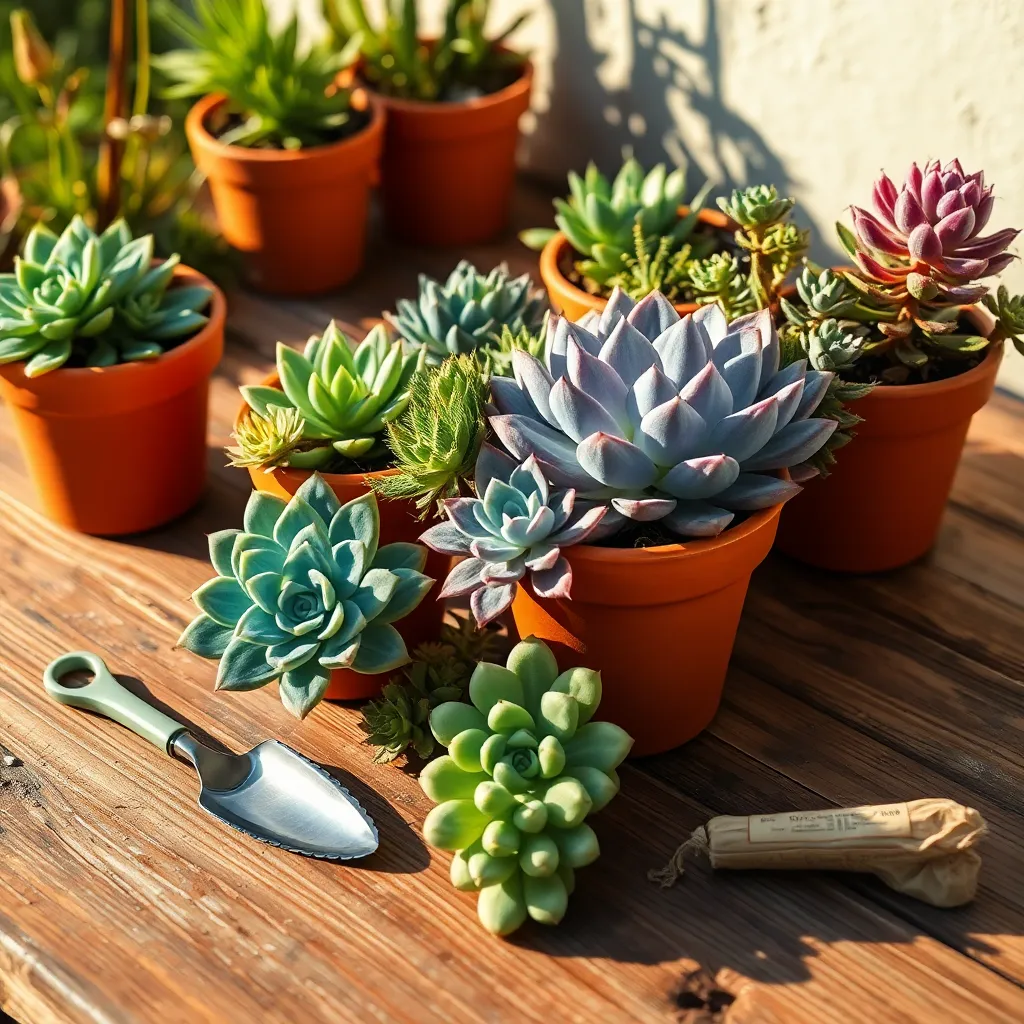
When it comes to fertilizing your succulents in the spring, moderation is key. Too much fertilizer can lead to rapid growth that compromises the structural integrity of these resilient plants.
Start by using a balanced, water-soluble fertilizer, diluted to half the recommended strength. Apply this solution sparingly, no more than once a month, to avoid over-feeding your succulents.
For those new to succulent care, remember that these plants are naturally adapted to nutrient-poor soils. Excessive nutrients can actually harm them, causing more harm than good.
Experienced gardeners might consider using a cactus-specific fertilizer, which is designed to meet the unique needs of succulents. Make sure to apply it only during the active growing season, which typically spans late spring to early summer.
Repot When Roots Outgrow Pot
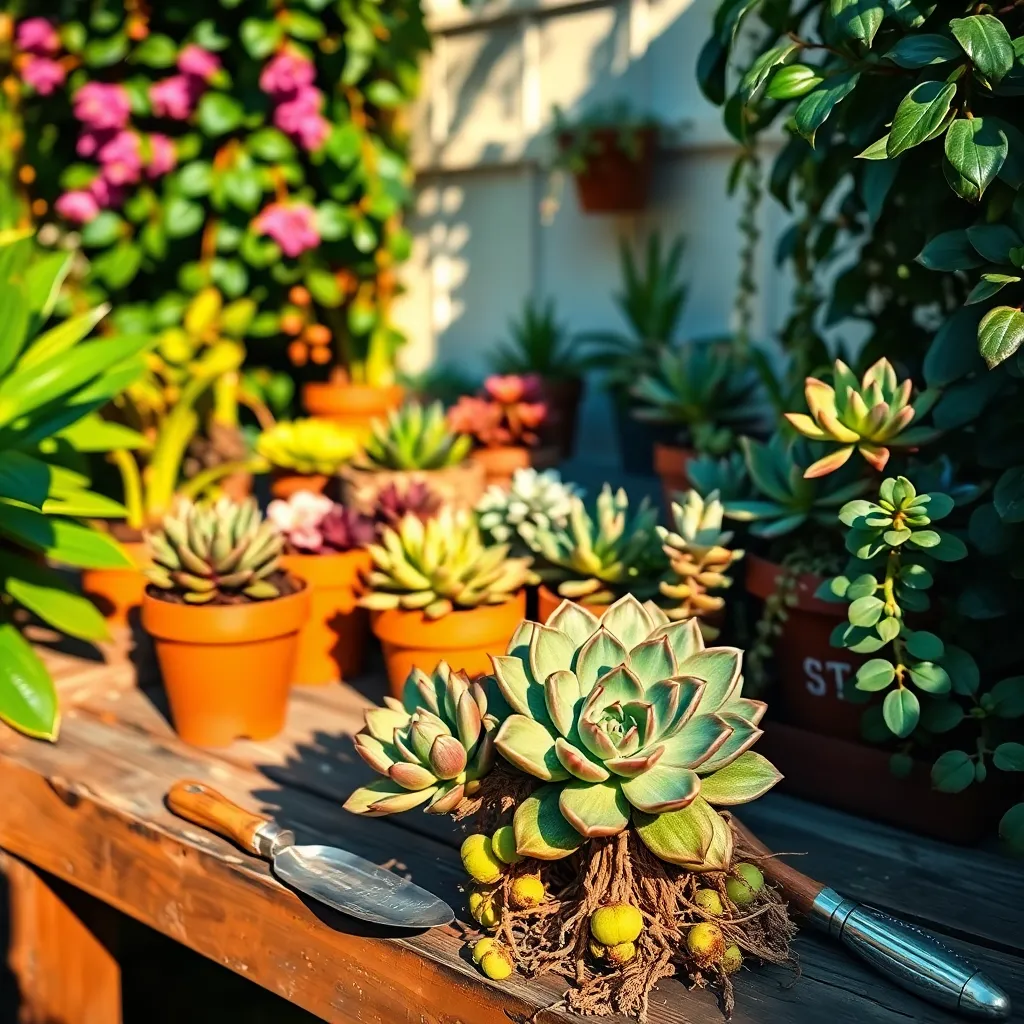
When your succulent’s roots start to peek through the drainage holes, it’s a clear sign that it’s time for repotting. Choose a pot that’s about 1-2 inches larger in diameter than the current one to give the roots more room to grow.
Before repotting, gently remove the plant from its existing pot, loosening the roots with your fingers. Inspect the roots for any signs of rot or damage, trimming away any unhealthy parts with clean scissors.
Succulents thrive in well-draining soil, so use a cactus or succulent-specific potting mix. You can also create your own mix by combining equal parts of potting soil, perlite, and coarse sand to enhance drainage.
Water the plant lightly after repotting to help settle the soil around the roots, but be cautious not to overwater. Allow the soil to dry thoroughly between waterings to prevent root rot, a common issue with succulents.
Prune Dead Leaves Regularly
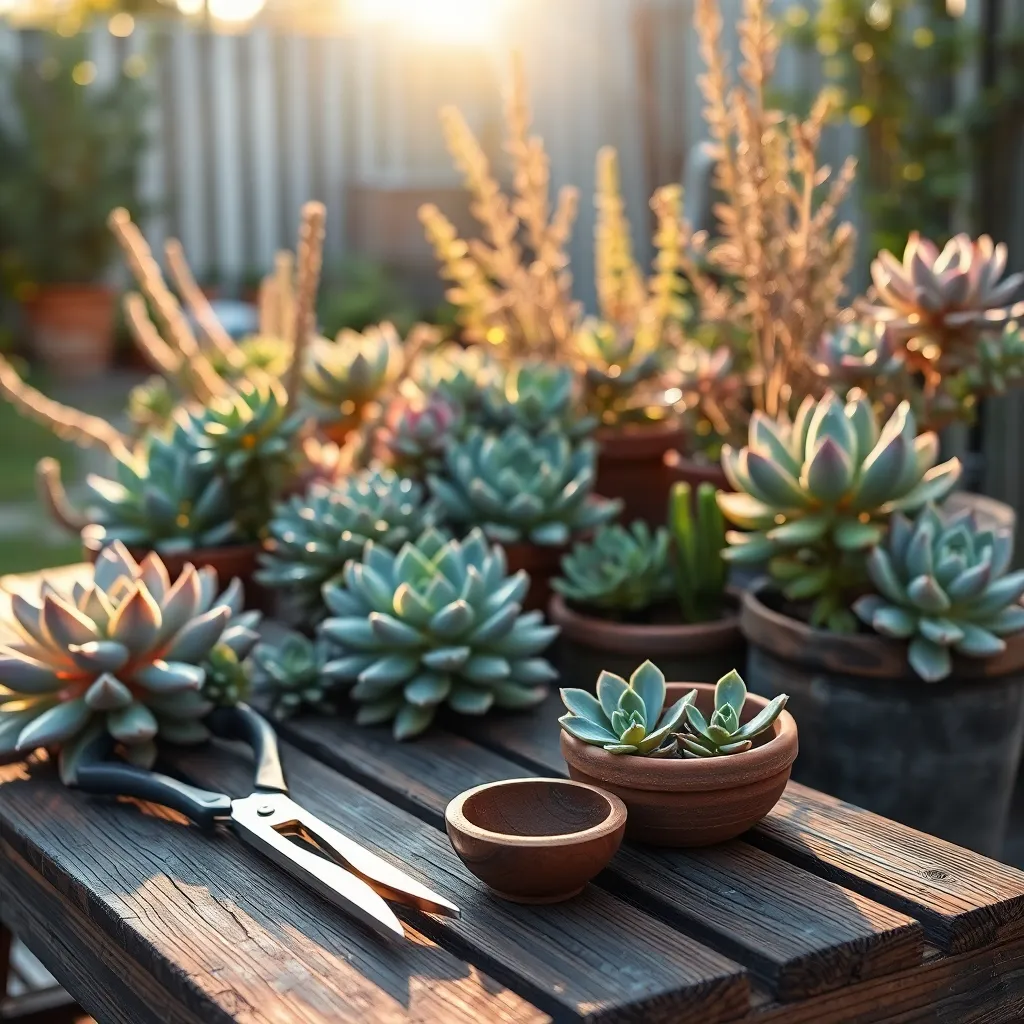
Regularly pruning dead leaves is essential for the health of your succulents. By removing these leaves, you prevent potential pest infestations and diseases, ensuring your plants remain vibrant and healthy.
To begin, inspect your succulents weekly to identify any dried or dying leaves. Gently pluck them off with your fingers or use clean, sharp scissors for larger plants, being careful not to damage healthy foliage.
Dead leaves can trap moisture, which is a breeding ground for fungi. Removing them also improves air circulation around the plant, which is particularly beneficial in humid climates.
For more advanced care, consider using a diluted neem oil spray after pruning to deter pests. This proactive step can be especially useful if your plants are kept outdoors, where exposure to insects is higher.
Avoid Overhead Watering
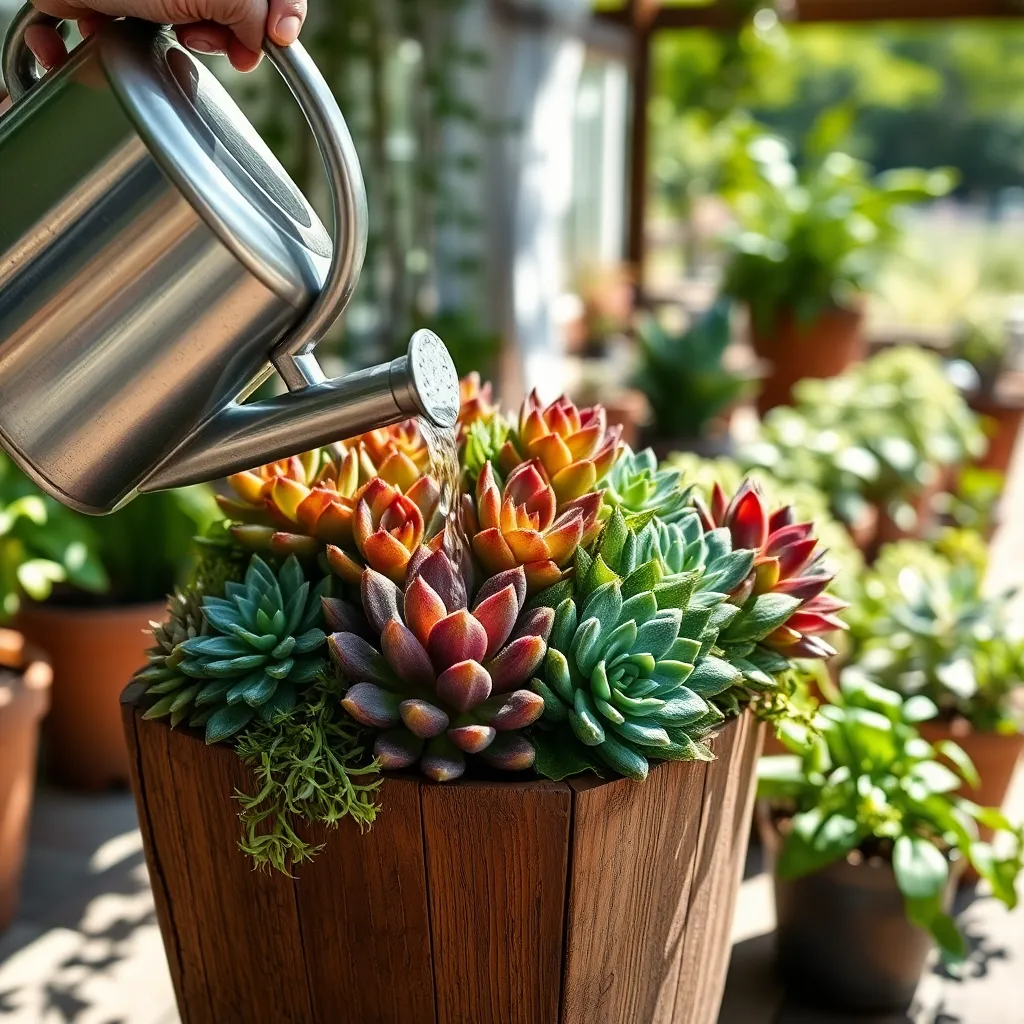
When watering succulents, it’s crucial to avoid overhead watering as it can lead to rot and fungal diseases. Instead, focus on watering the soil directly at the base of the plant to ensure the roots receive adequate moisture without wetting the leaves.
Watering succulents this way minimizes the risk of water pooling on the leaves, which can cause issues in humid environments. A small watering can with a narrow spout or a garden syringe can be particularly effective for precision watering.
For those just starting out with succulents, remember that these plants thrive in well-draining soil. Consider using a cactus mix or creating your own blend with sand, perlite, and potting soil to enhance drainage and replicate their natural habitat.
Experienced gardeners might want to experiment with bottom watering, where you place the pot in a shallow dish of water and let the soil absorb moisture through the drainage holes. This technique ensures that water reaches the roots directly and reduces the likelihood of overwatering.
Inspect for Pests Monthly
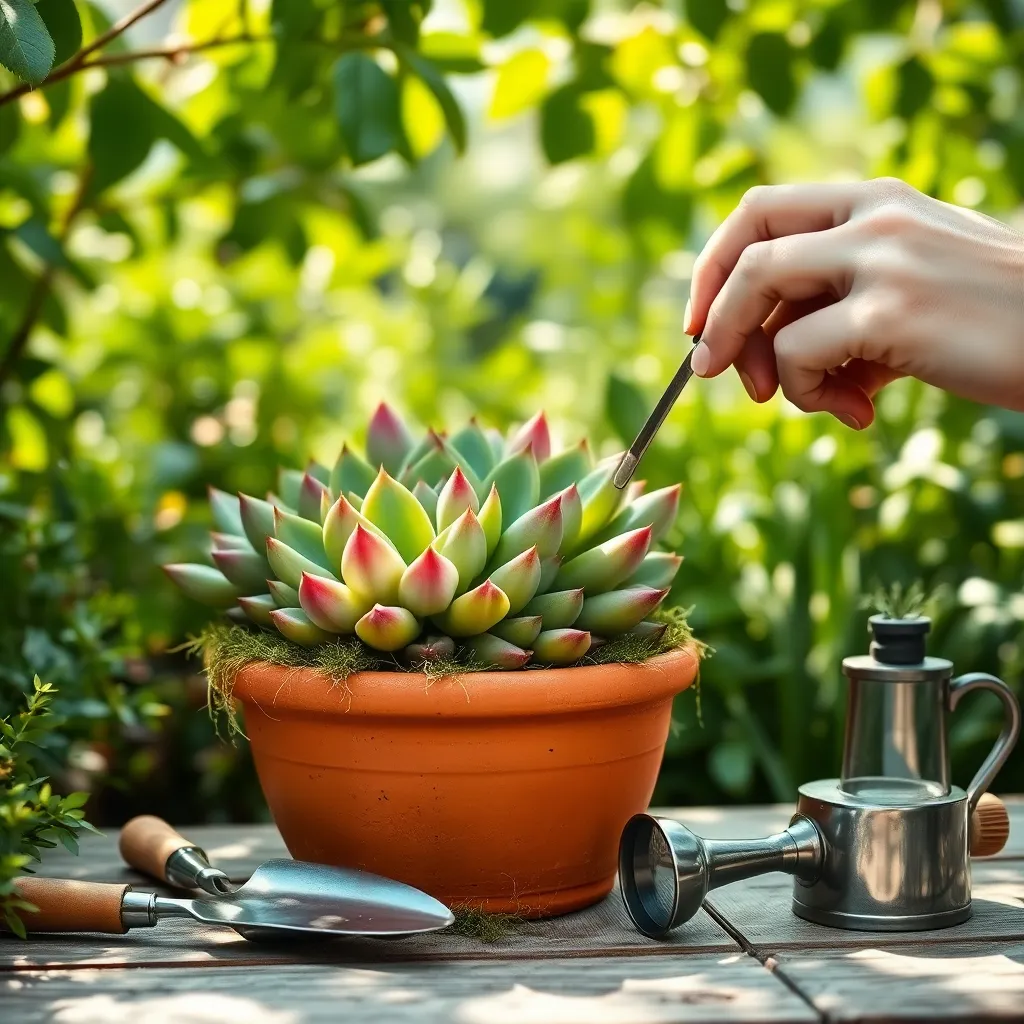
Inspecting your succulents for pests on a monthly basis is crucial to maintaining their health. Common pests such as mealybugs, spider mites, and aphids can easily infest your plants, especially if they’re grown indoors or in clustered arrangements.
Begin by examining the leaves and stems closely, using a magnifying glass if necessary to spot tiny invaders. Look for sticky residue, webbing, or visible insects as signs of an infestation, and act promptly to prevent further damage.
For beginners, a simple remedy like wiping leaves with a damp cloth can help remove pests early on. More experienced gardeners might use a solution of equal parts water and rubbing alcohol to treat affected areas, ensuring the solution is applied to both sides of the leaves.
It’s also beneficial to maintain a clean environment around your succulents by removing fallen leaves and debris. This practice helps deter pests and also reduces the risk of fungal diseases, which can thrive in cluttered, moist conditions.
Use Terracotta Pots for Breathability
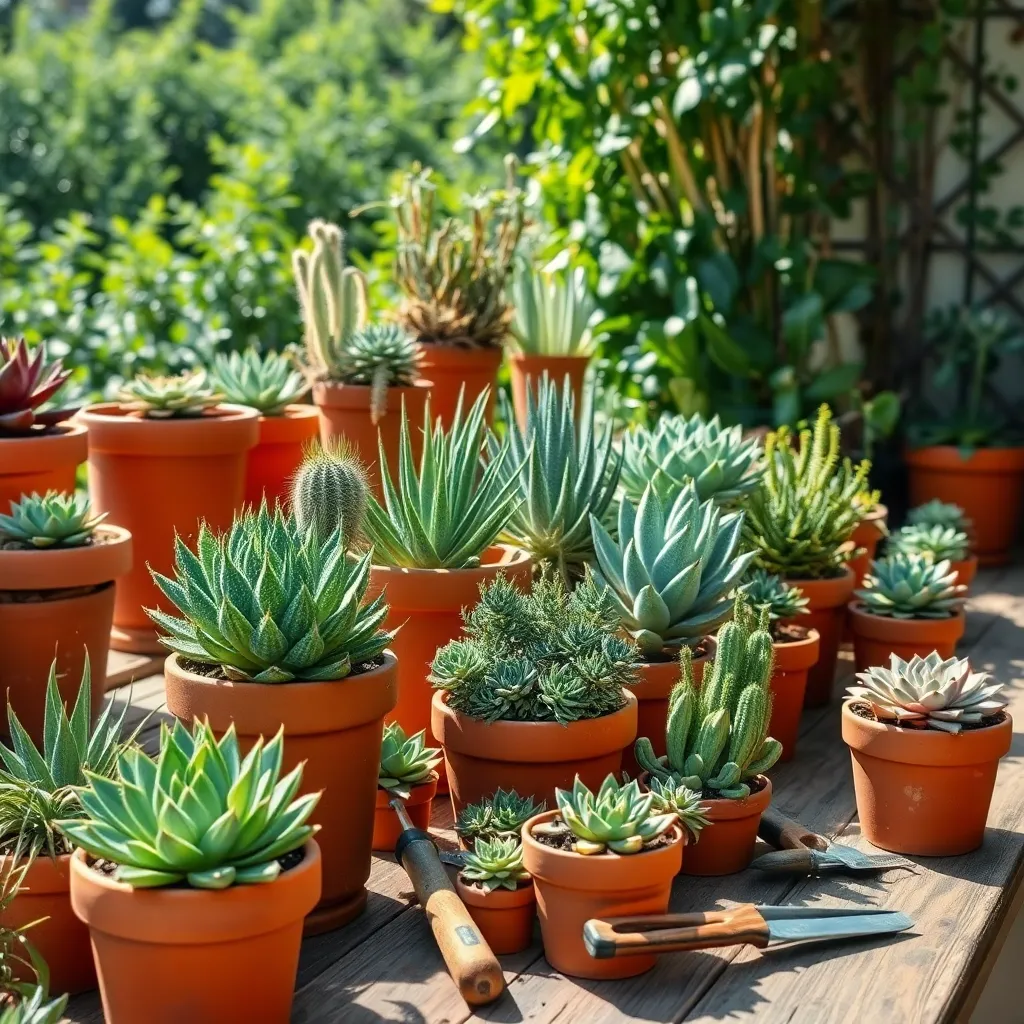
Terracotta pots are an excellent choice for growing succulents due to their natural breathability. The porous nature of terracotta allows excess moisture to evaporate, which helps prevent root rot—a common issue with succulents.
For beginners, using terracotta pots can simplify the watering routine, as they help maintain an ideal moisture balance. It’s important to use a well-draining soil mix, such as a combination of cactus soil and perlite, to further enhance drainage and aeration.
Advanced gardeners might appreciate that terracotta pots can also help regulate the soil temperature, keeping it cooler in hot weather. This can be particularly beneficial for succulents that are sensitive to temperature fluctuations.
To take full advantage of terracotta’s properties, place your pots in a location that receives plenty of sunlight, as this will aid in the evaporation process. Remember to water your succulents thoroughly but infrequently, allowing the soil to dry out completely between waterings.
Introduce Gradual Light Changes
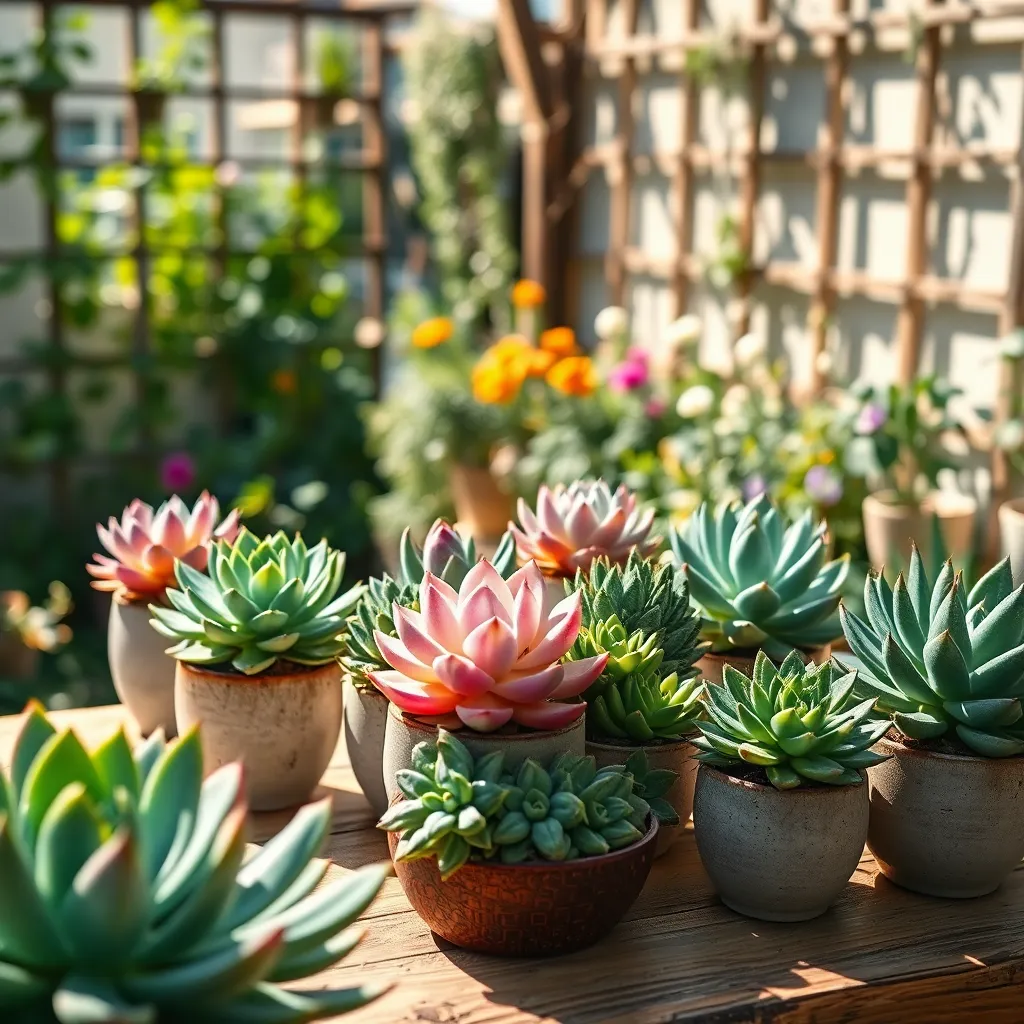
Transitioning your succulents to new light conditions requires a gradual approach to prevent stress. Start by moving them to a slightly brighter spot for a few hours each day, gradually increasing their exposure over a week or two.
It’s important to remember that direct sunlight can be too intense for some succulents, especially during midday. Use sheer curtains or a shade cloth to filter sunlight if your plants show signs of sunburn, like brown patches or shriveled leaves.
For those growing succulents indoors, rotating pots every few weeks ensures even light exposure. This simple practice prevents your plants from leaning towards the light and maintains a balanced growth pattern.
Advanced gardeners might consider investing in a grow light to supplement natural light, particularly during winter months or in low-light homes. LED grow lights are energy-efficient and can be adjusted to provide the optimal spectrum for succulent growth, mimicking the sun’s rays effectively.
Allow Soil to Dry Out
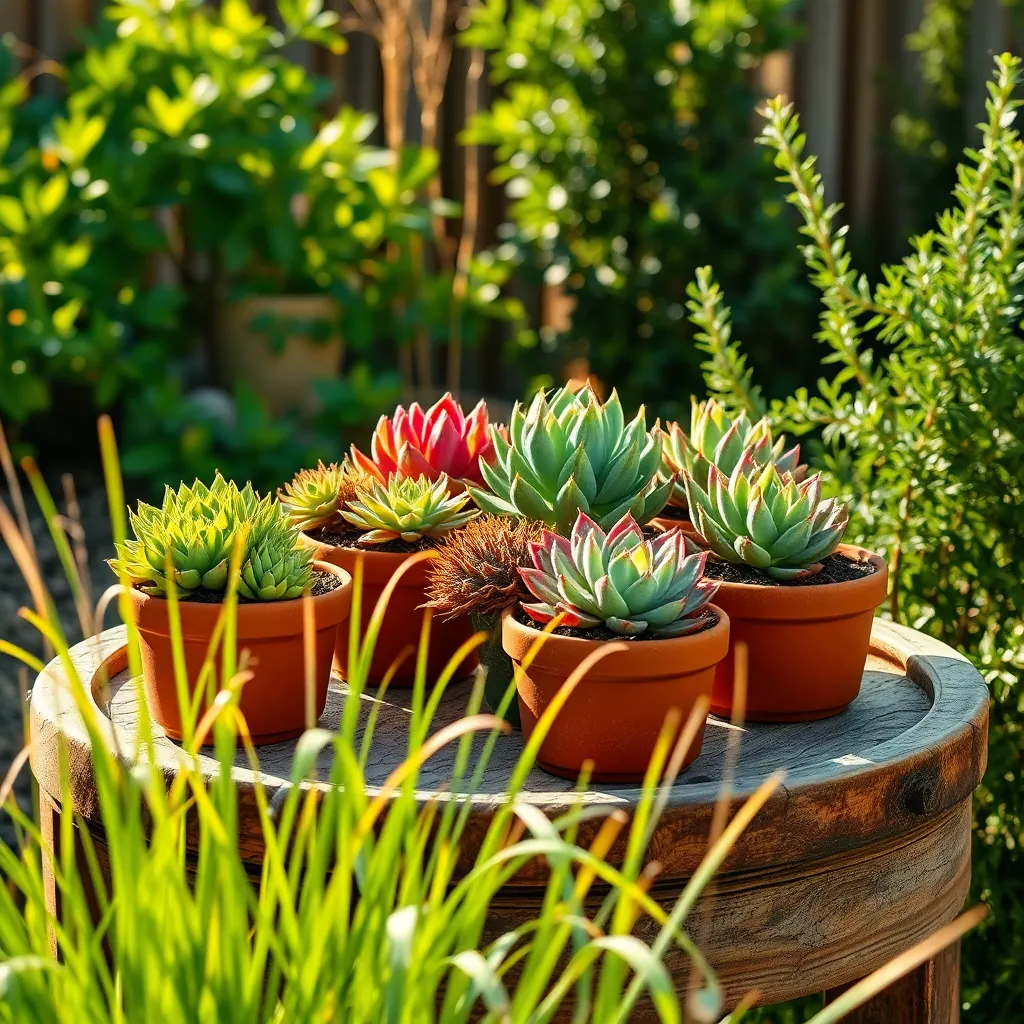
To ensure your succulents thrive, it’s crucial to allow the soil to dry out completely between waterings. This mimics their natural desert environment and prevents root rot, a common issue when succulents are overwatered.
Before watering, insert your finger about an inch into the soil to check its moisture level. If the soil feels dry, it’s time to water; if it’s still damp, give it a few more days.
For beginners, using a well-draining soil mix is essential. Consider a blend of cactus soil and perlite, which ensures excellent drainage and aeration.
Experienced gardeners can experiment with different soil amendments, such as coarse sand or pumice, to further improve drainage. This can be particularly effective in humid climates where soil tends to retain moisture longer.
Group by Watering Needs
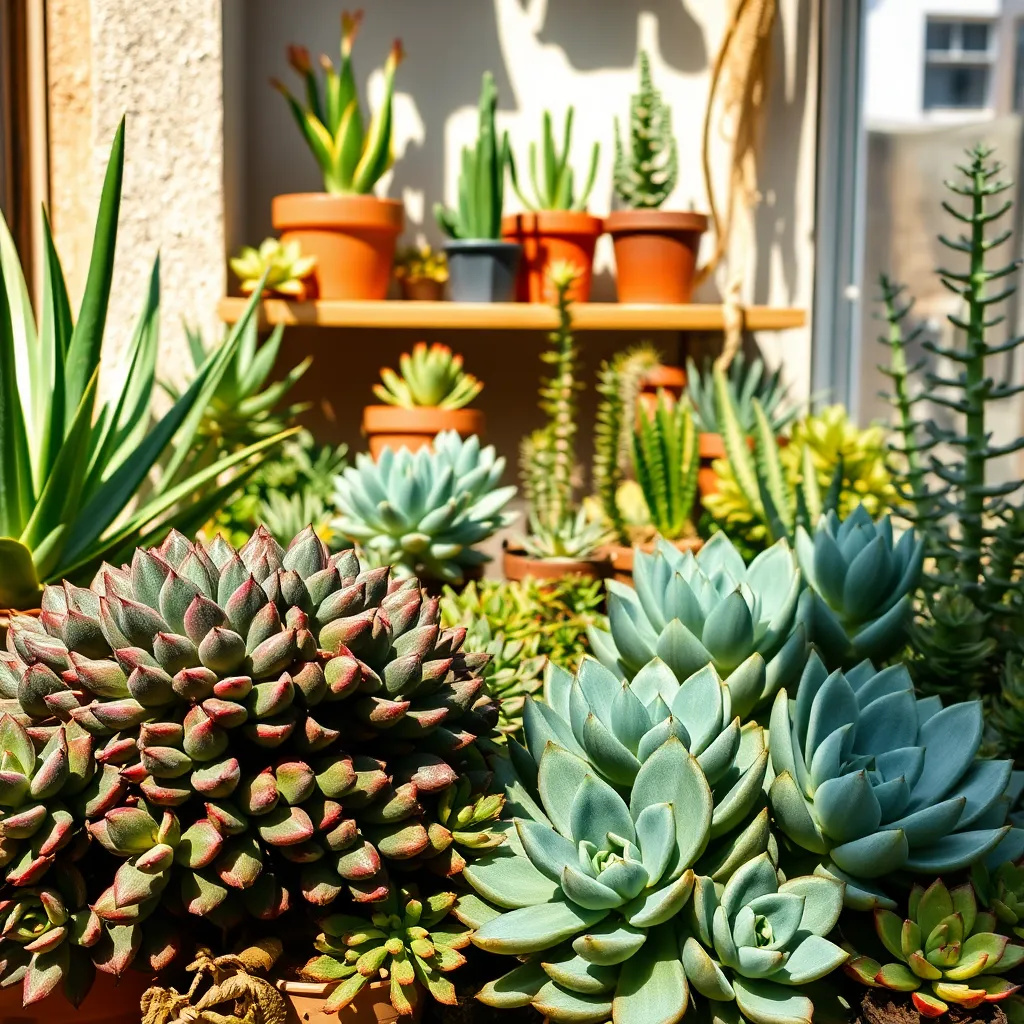
Grouping succulents by their watering needs can significantly enhance your plant care routine. This organization allows you to tailor the watering schedule to the specific requirements of each group, ensuring healthier and thriving plants.
Begin by identifying succulents with similar water requirements, such as those that prefer a dry environment. Plants like Echeveria and Sedum typically thrive with less frequent watering, making them ideal companions in a low-water group.
On the other hand, succulents such as Haworthia and Gasteria prefer slightly more moisture. These plants benefit from being grouped together, as they may require more frequent watering compared to their drought-tolerant counterparts.
To maintain optimal growth, consider the specific soil needs of each group. Use a fast-draining soil mix for all succulents, but adjust the watering frequency based on the group’s needs to prevent overwatering.
Protect from Frost in Winter

As temperatures drop in winter, succulents become vulnerable to frost damage. To protect them, consider moving potted succulents indoors or to a sheltered area like a garage or porch. If your succulents are planted in the ground, cover them with frost cloths or old bedsheets during particularly cold nights. This simple action can help retain heat and shield the plants from frost.
Another effective method is to use mulch around the base of your outdoor succulents. A layer of mulch, such as wood chips or straw, helps insulate the roots and maintain a consistent soil temperature. However, be cautious not to cover the leaves, as this can trap moisture and lead to rot.
For those living in regions with harsh winters, selecting cold-hardy succulents can be a wise choice. Varieties like Sedum and Sempervivum are more tolerant of low temperatures, making them ideal for outdoor planting in frosty climates. By choosing the right species, you can enjoy beautiful succulents year-round without the constant worry of frost damage.
Consider investing in a few portable greenhouses if you have a larger collection of succulents. These structures provide an extra layer of protection, creating a microclimate that can moderate temperatures and humidity levels. They are especially useful for those who want to keep their succulents outdoors while still safeguarding them from winter’s chill.
Monitor Humidity Levels
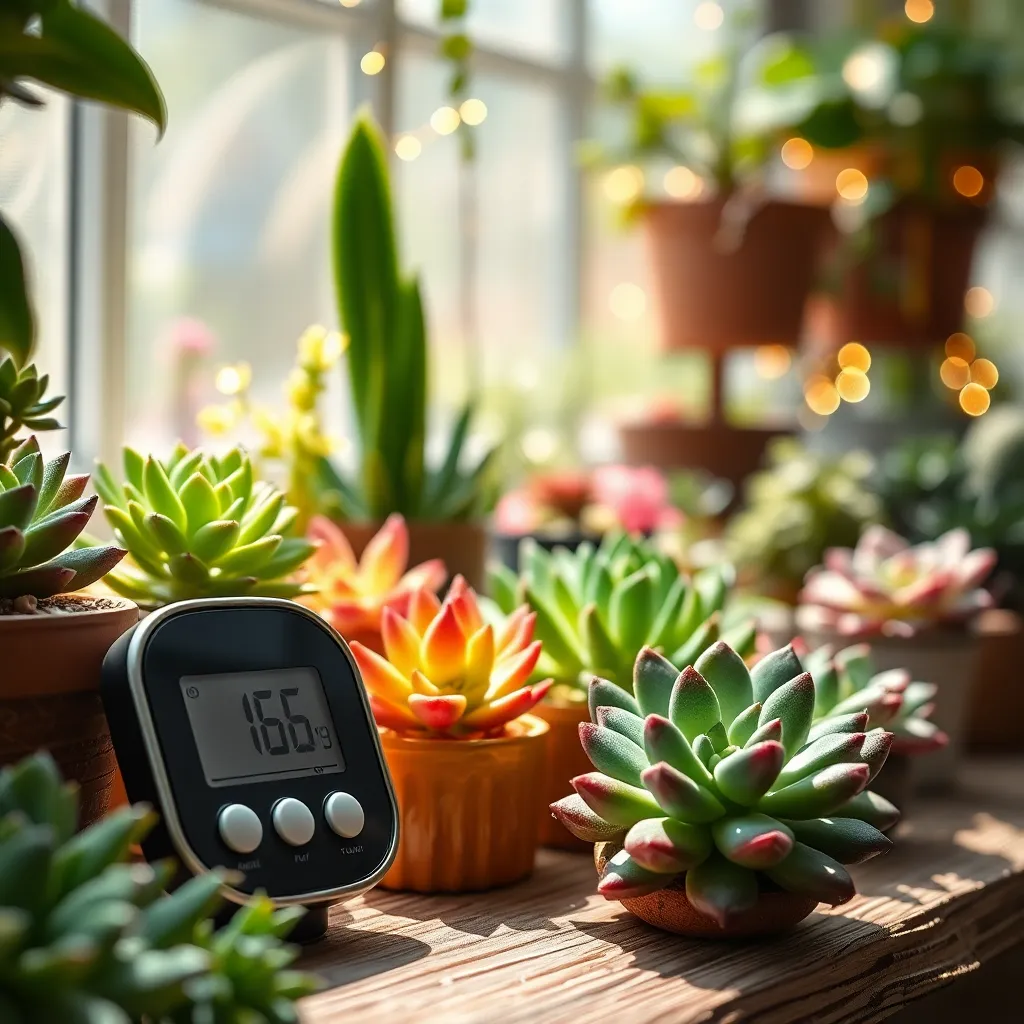
Monitoring humidity levels is crucial for ensuring your succulents thrive. These resilient plants prefer low humidity environments, as excessive moisture can lead to rot and fungal diseases.
Begin by placing your succulents in a location with good air circulation. If you live in a humid climate, consider using a dehumidifier or placing a fan in the room to help maintain optimal conditions.
For indoor succulents, a simple hygrometer can help you track humidity levels effectively. Aim to keep the humidity below 50%, especially during the summer months when moisture levels tend to rise.
Advanced gardeners might experiment with different soil mixes to combat high humidity. A well-draining cactus mix combined with perlite or pumice ensures excess moisture doesn’t linger around the roots.
Provide Shade in Intense Heat
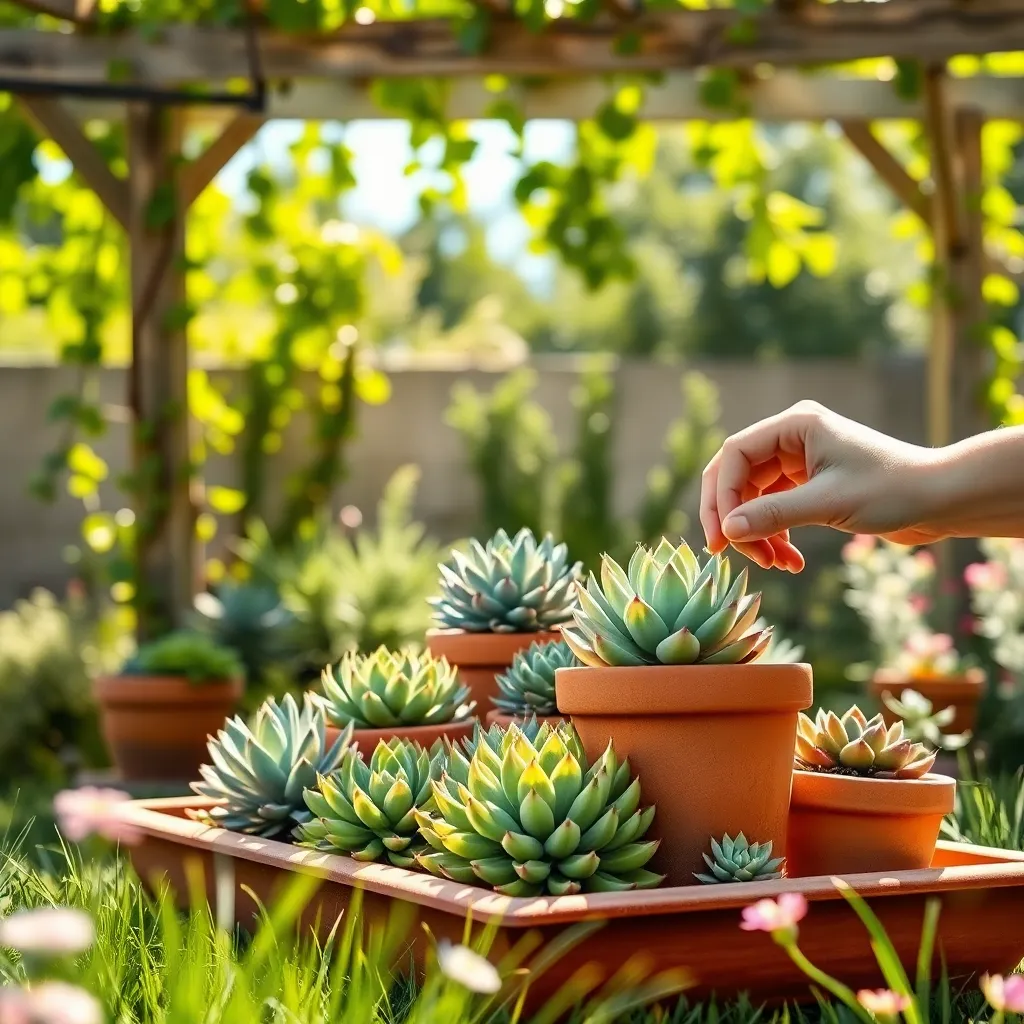
In areas with intense heat, providing shade for your succulents can be crucial for their survival. Direct sunlight can scorch leaves and cause stress, so consider using shade cloths or even strategically placing taller plants to shield them.
Succulents generally thrive in bright light, but too much can be harmful. For beginners, placing succulents in an area where they receive filtered sunlight during peak afternoon hours can prevent damage.
Consider the use of outdoor umbrellas or temporary shade structures during particularly hot months. These solutions are particularly useful in regions where temperatures soar beyond 85°F (29°C), ensuring that your plants remain healthy and vibrant.
Advanced gardeners might experiment with different shade percentages in cloths, such as 30% or 50%, to find the optimal balance for their plant varieties. Experimenting with different setups can help you understand the specific needs of your succulents, allowing you to adjust as necessary.
Test Soil Acidity Annually
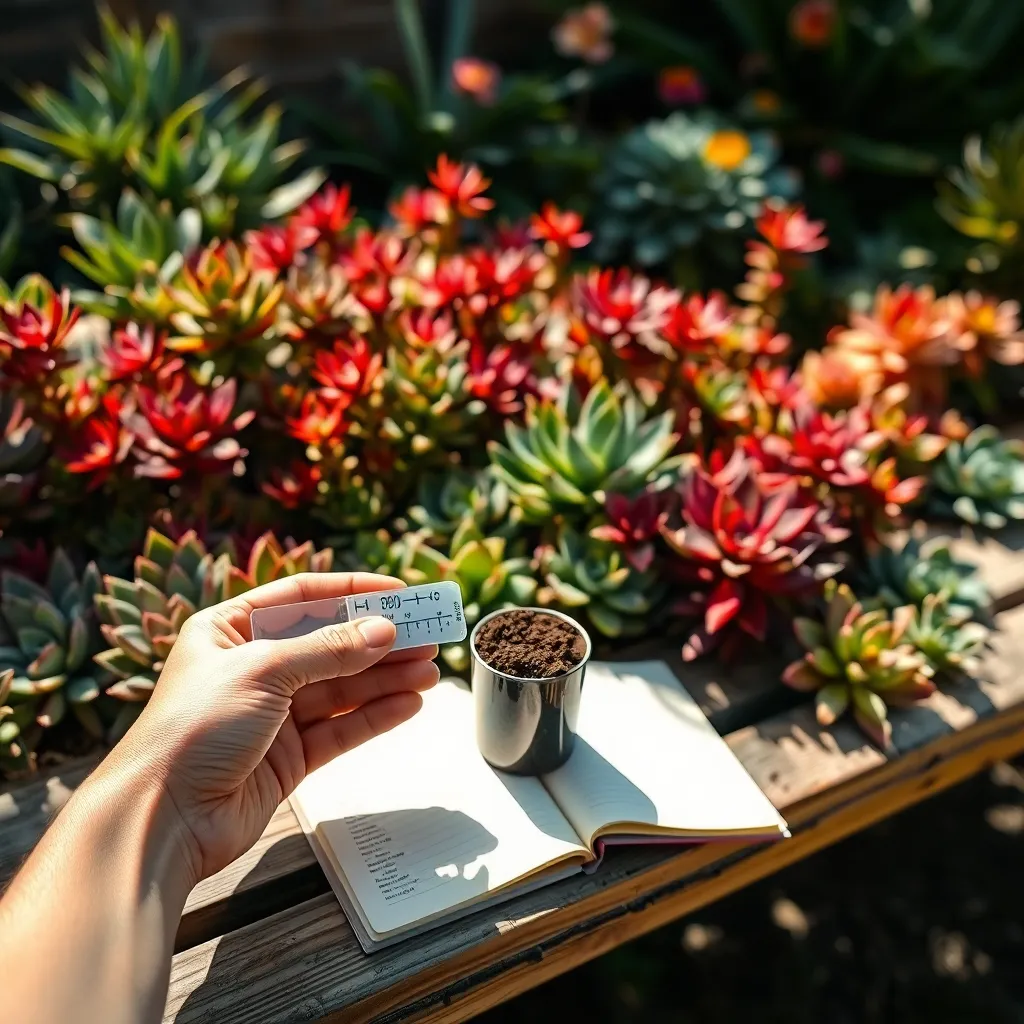
To ensure your succulents thrive, it’s essential to test soil acidity annually. Succulents generally prefer soil with a pH between 6.0 and 7.5, which is slightly acidic to neutral.
Testing your soil is easy and can be done using a simple pH test kit available at garden centers. Regular testing helps you identify if your soil conditions are shifting, allowing you to make necessary adjustments before they affect plant health.
If the soil is too acidic, consider adding lime to increase the pH level. Conversely, if it’s too alkaline, incorporate organic matter like pine needles or peat moss to lower the pH.
For those keen on advanced techniques, using a soil pH meter can offer more precise readings. Monitoring and maintaining the appropriate pH ensures that your succulents can absorb nutrients efficiently, promoting vibrant growth and resilience.
Avoid Standing Water in Trays
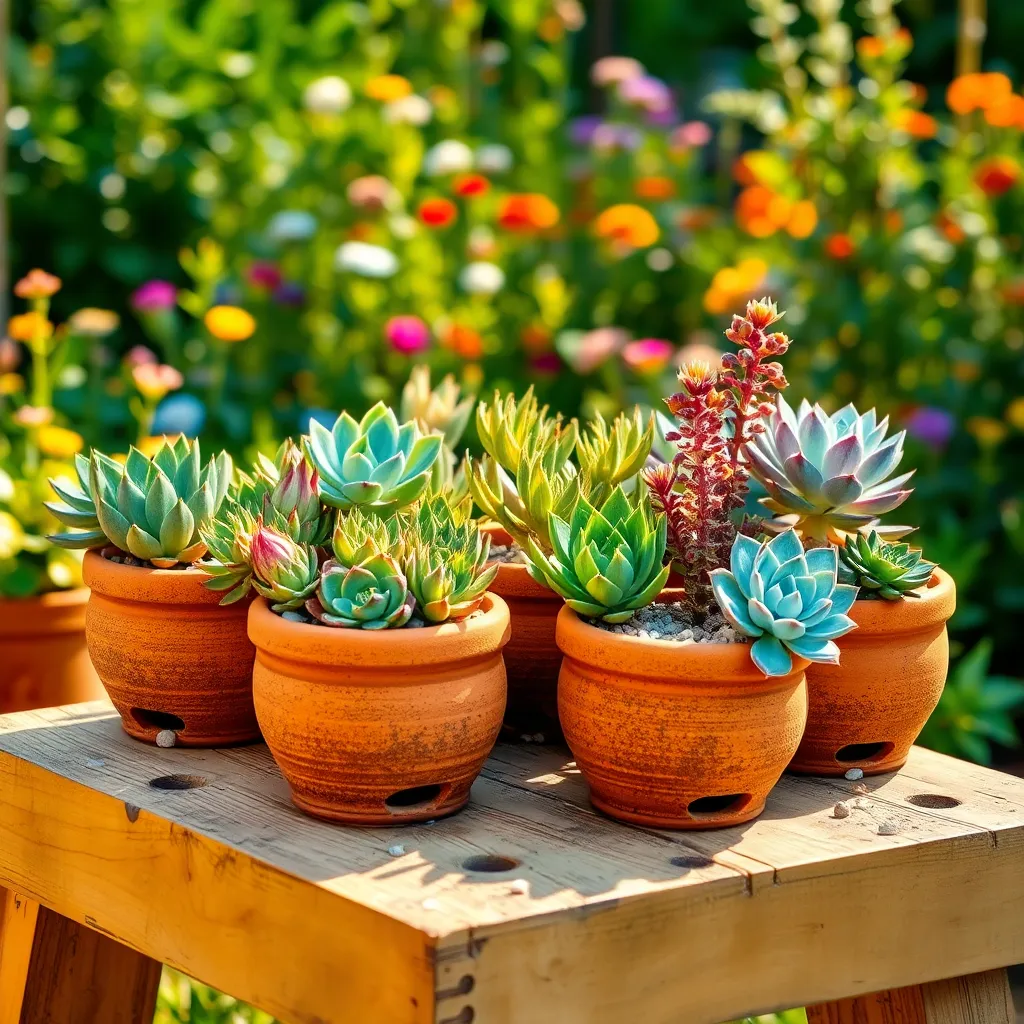
When caring for succulents, it is crucial to avoid standing water in trays as it can lead to root rot. Ensure your pots have drainage holes to allow excess water to escape, keeping the roots dry and healthy.
To further prevent water from sitting in trays, consider using a layer of gravel or small stones at the bottom of the tray. This creates a barrier between the pot and the water, allowing evaporated moisture to circulate without drowning your plants.
Regularly checking your trays for standing water is a simple step that can make a big difference. If you notice water has collected, empty the tray immediately to prevent any potential damage to your succulent’s roots.
For succulent enthusiasts looking for advanced care, consider using a moisture meter to monitor soil moisture levels. This tool helps in determining the right time to water your plants again, ensuring they are neither overwatered nor underwatered.
Space Plants to Prevent Crowding
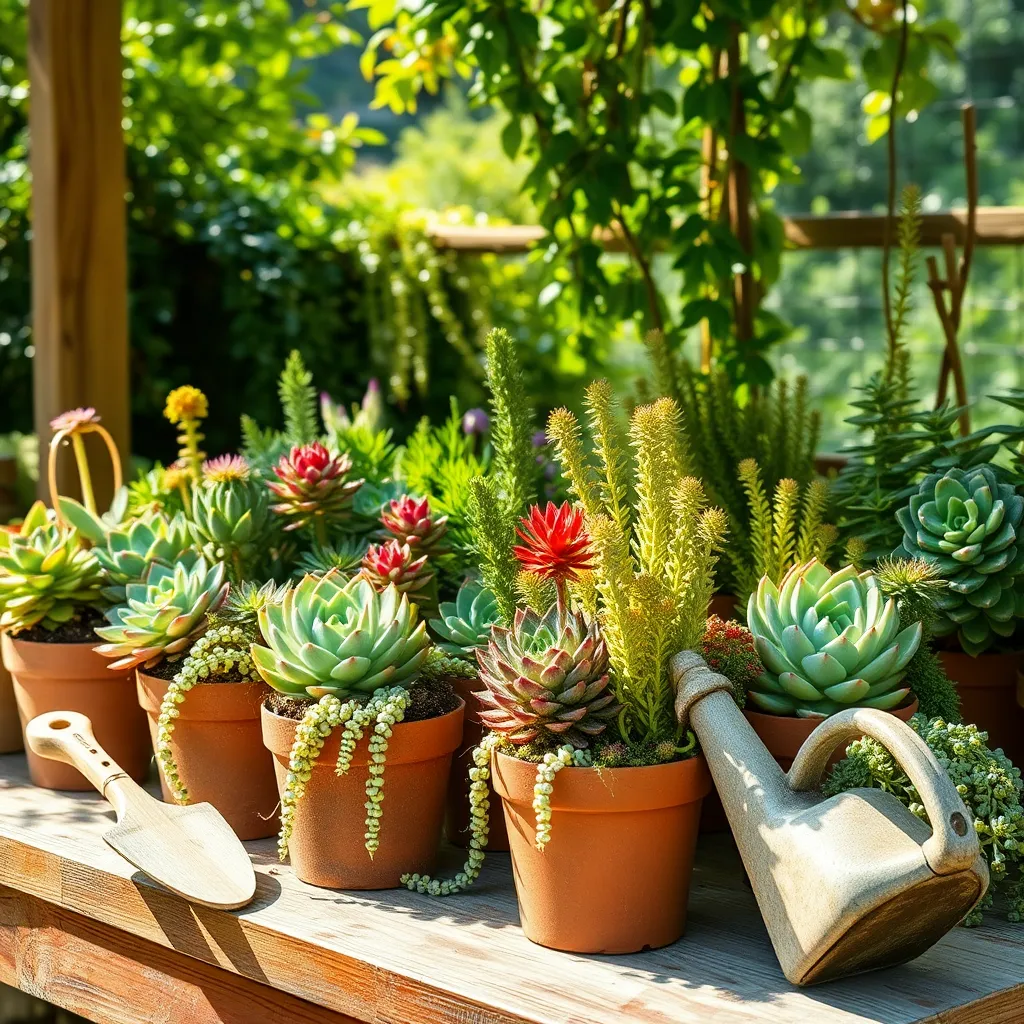
Proper spacing is crucial to prevent overcrowding, which can lead to poor air circulation and increased susceptibility to pests. Begin by researching the mature size of your succulents and plan to leave at least a few inches between them. This allows each plant to have room to grow and access to adequate sunlight.
When planting succulents in containers, it’s important to choose pots that are wide enough to accommodate their future growth. Consider using shallow, wide containers which are ideal for spreading types like Echeveria and Sedum. These containers not only enhance aesthetic appeal but also promote better air flow around the plants.
For those growing succulents outdoors, ensure you space them according to their potential size. Use a ruler or a measuring tape to maintain uniform spacing, typically about 6 to 12 inches apart, depending on the species. This spacing will help prevent issues such as root competition and ensure each plant gets the nutrients it needs.
Advanced gardeners might experiment with companion planting to maximize space while preventing crowding. Pair taller succulents with low-growing varieties to create a layered look that optimizes vertical and horizontal space. This approach not only makes efficient use of garden space but also enhances the visual diversity of your succulent arrangement.
Use Rainwater for Watering
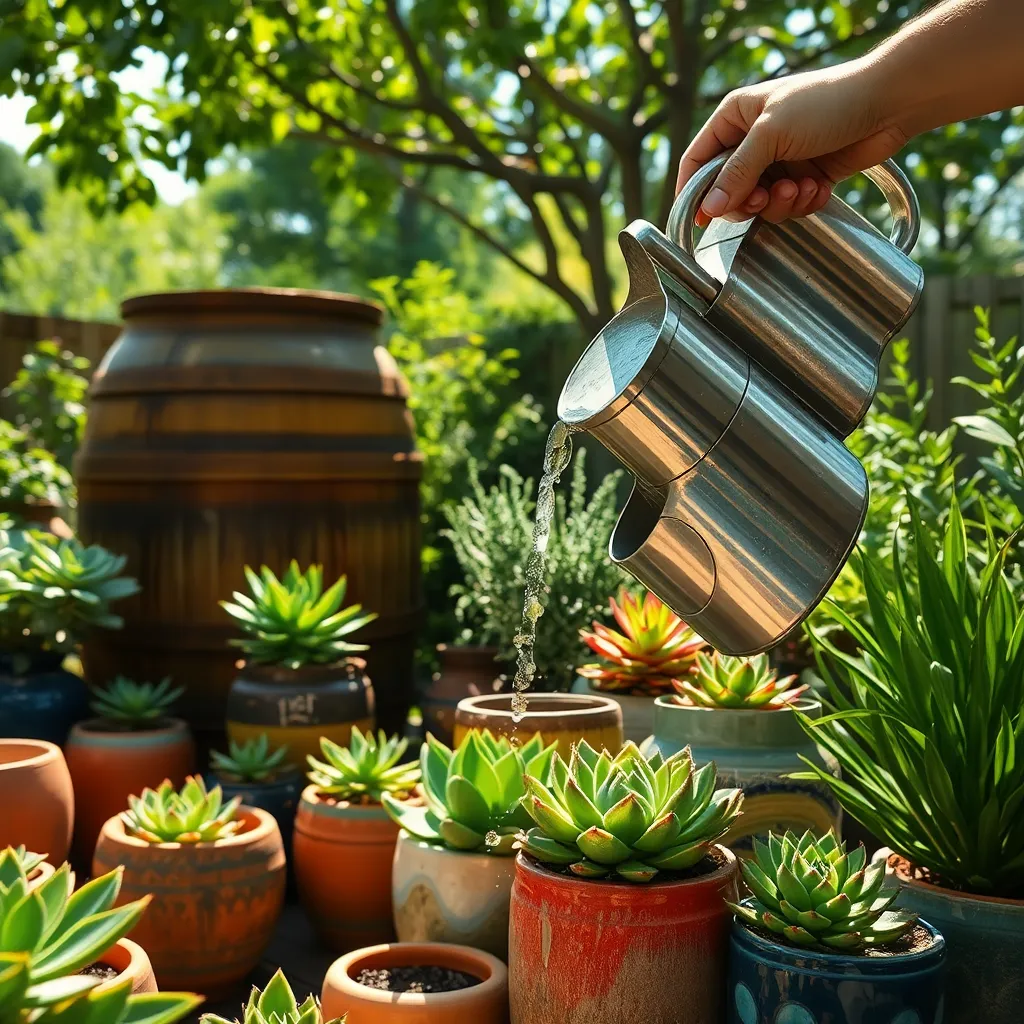
Using rainwater for watering your succulents is an environmentally friendly practice that can contribute to their health. Rainwater is naturally soft and free of the salts and chemicals often found in tap water, which can be detrimental to the delicate root systems of succulents.
To collect rainwater efficiently, consider installing a rain barrel under a downspout in your garden. Ensure the barrel is covered to prevent debris and insects from contaminating the water, and use a fine-mesh filter to keep it clean.
Watering succulents with rainwater is beneficial because it mimics their natural habitat conditions, where they thrive on occasional rainfall. Aim to use collected rainwater within a week to prevent stagnation and potential algae growth, which could harm your plants.
For those living in arid regions, maximizing rainwater collection during the rainy season can provide a sustainable water source for dry months. Advanced gardeners might consider connecting multiple barrels to capture more water, ensuring a ready supply for all their succulents.
Acclimate New Plants Slowly

When introducing new succulents to your garden, it’s essential to acclimate them slowly to their new environment. This gradual process helps prevent shock and ensures the plants thrive in their new conditions.
Begin by placing your new succulents in a shaded area for a few days. This allows them to adjust to the temperature and humidity levels without the stress of direct sunlight.
After a few days, gradually introduce your succulents to more sunlight, starting with a few hours in the morning or late afternoon. This step-by-step exposure helps them build up tolerance to full sun over a week or two.
For best results, monitor the plants closely for signs of sunburn, such as browning or white patches on the leaves. If these symptoms appear, reduce sun exposure slightly and allow the plants to recover before increasing it again.
Conclusion: Growing Success with These Plants
As you delve into nurturing your relationships, the 20 expert tips for thriving succulents serve as a metaphorical guide to cultivating your connections with others. From understanding the importance of consistent communication and setting healthy boundaries, to practicing empathy and cherishing shared experiences, these insights remind us of the delicate yet resilient nature of our bonds. Just as succulents flourish with the right balance of light and care, relationships thrive on attention and understanding.
Your actionable next step is to choose one tip to focus on this week—whether it’s scheduling regular check-ins or expressing appreciation more openly—and observe how it positively influences your interactions. Remember, small, intentional efforts can lead to profound transformations.
As you embark on this journey to nurture and strengthen your relationships, bookmark this article as a valuable resource for continuous growth and reference. With each step, you’re paving the way for deeper connections and a more harmonious future. Embrace the promise of relationship success, knowing that with dedication and patience, your efforts will yield a garden of flourishing bonds. 🌱

